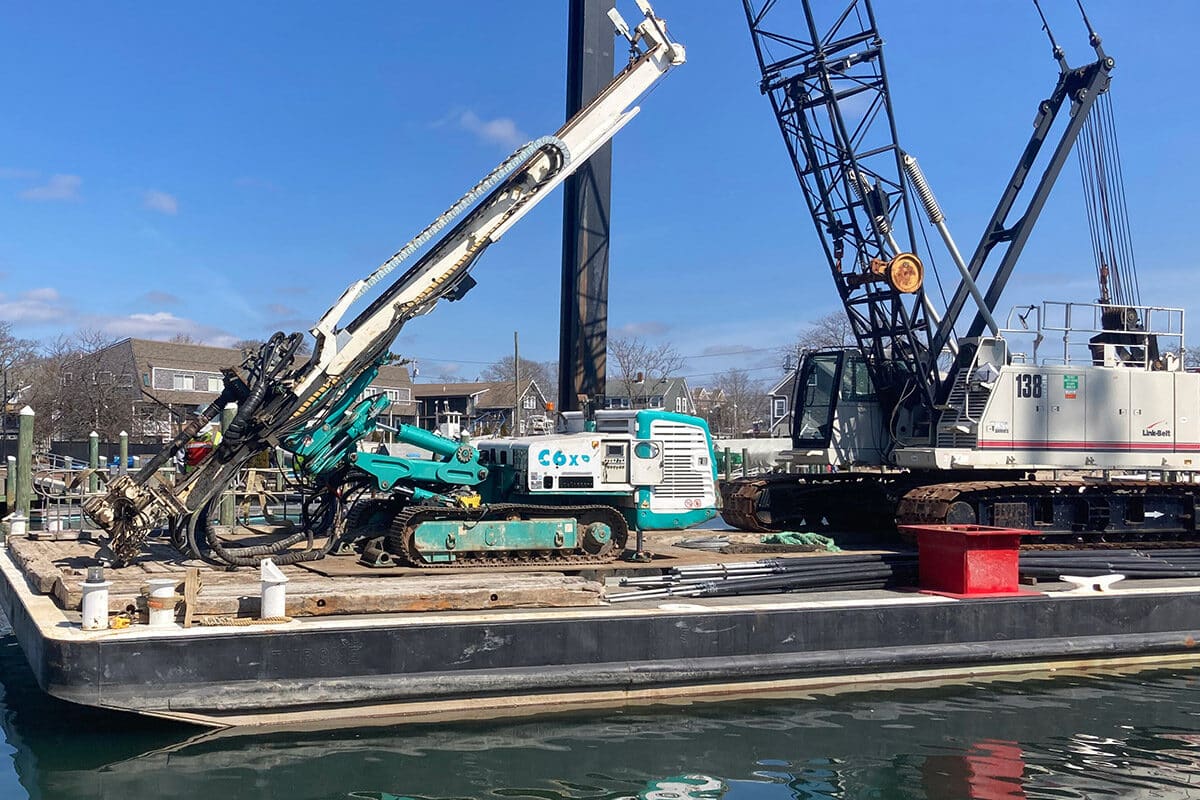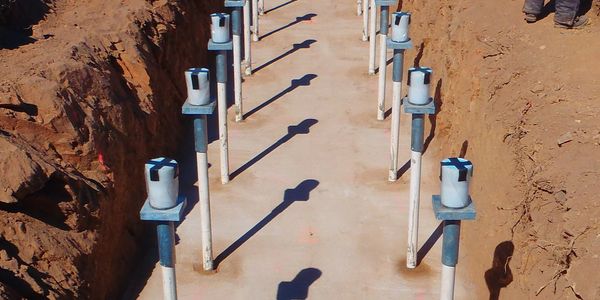The Advantages of Using Williams Anchors for Long-Lasting Foundation Security
The Advantages of Using Williams Anchors for Long-Lasting Foundation Security
Blog Article
High-Performance Rock Anchors for Challenging Atmospheres
The need for high-performance rock supports in difficult atmospheres can not be overemphasized, specifically in the context of steep inclines and seismic zones where traditional services typically fall short. These anchors, identified by their outstanding load-bearing ability and progressed corrosion resistance, play a pivotal duty in making certain the stability of structures under unfavorable problems. As we check out the innovative innovations and ideal methods that enhance their efficiency, it ends up being evident that understanding their applications is crucial for success in geotechnical engineering. The effects of these advancements expand much past simple stability.
Significance of Rock Anchors
The importance of rock supports in design and building can not be overstated, as they supply important stability and assistance in different geological conditions. These anchors are crucial for protecting frameworks to the bedrock, particularly in locations vulnerable to landslides, seismic activity, or other geological instabilities. By transferring tons from the framework to secure rock formations, rock supports assist alleviate the danger of architectural failing, guaranteeing both safety and longevity.
Furthermore, rock supports help with the building and construction of tough tasks, consisting of deep excavations, preserving wall surfaces, and bridge foundations. Their capability to adjust to various soil and rock kinds makes them an important property in civil engineering projects worldwide. The flexibility of rock supports enables engineers to make solutions that attend to site-specific difficulties, maximizing both efficiency and cost-effectiveness.
In addition, using rock anchors can substantially decrease the quantity of material needed for building and construction, causing more sustainable practices. As facilities demands grow in intricacy and range, the significance of rock anchors in giving trusted support group will proceed to be a crucial consideration in engineering design and implementation. Their role in boosting stability makes rock anchors crucial in the contemporary construction landscape.

Trick Functions of High-Performance Anchors
High-performance anchors are characterized by numerous crucial functions that enhance their performance popular applications. One of the most substantial qualities is their exceptional load-bearing capacity, which permits them to endure extreme pressures without jeopardizing structural honesty. This is commonly accomplished through innovative materials and cutting-edge style, which ensure optimum strength-to-weight ratios.
One more important attribute is rust resistance, particularly for supports used in extreme environments. Making use of specialized coverings or corrosion-resistant alloys dramatically prolongs the lifespan of these anchors, decreasing maintenance prices and enhancing integrity. Additionally, high-performance supports are made for flexibility, permitting for simple installment in various geological conditions, consisting of fractured rock or loose dirt.
Lots of high-performance supports additionally include keeping track of abilities, allowing real-time analysis of support efficiency under tons. These functions collectively contribute to the overall efficiency and integrity of high-performance rock supports in complicated and difficult atmospheres.
Applications in Testing Settings
Using advanced design principles, high-performance rock visit homepage supports are necessary in a range of challenging settings, such as steep inclines, deep excavations, and seismic areas. These anchors give important support and security in conditions where typical securing methods might fail. In high slope applications, they neutralize the forces of gravity and dirt erosion, protecting against landslides and making sure the safety of framework above.
In deep excavation tasks, high-performance rock anchors are utilized to stabilize maintaining walls and stop wall failure, hence helping with secure building techniques. Their ability to stand up to high tensile loads makes them suitable for these applications, where the integrity of the excavation site is extremely important.
Furthermore, in seismic areas, rock anchors are important for boosting the resilience of structures versus earthquake-induced pressures. By securely anchoring structures and framework to the bedrock, they reduce the danger of architectural failure during seismic events.
These applications show the convenience and reliability of high-performance rock anchors, making them crucial tools in geotechnical engineering (Williams Anchors). Their efficiency in safeguarding tough environments underscores the significance of continued advancement and application of durable anchoring solutions in the field

Cutting-edge Technologies in Rock Anchoring
Recent developments in rock anchoring modern technology have transformed the means designers approach stabilization and assistance in geotechnical tasks. Innovations such as high-strength materials, advanced finishes, and smart monitoring systems have substantially boosted the performance and reliability of rock anchors in difficult settings.
One remarkable development is making use of high-tensile steel alloys that use remarkable strength-to-weight proportions, permitting lighter and extra reliable support systems without endangering architectural stability. In addition, corrosion-resistant coverings, such as epoxy or galvanized surfaces, expand the life-span of supports in rough problems, decreasing upkeep needs.
In addition, the assimilation of clever modern technology right into rock anchoring systems makes it possible for real-time surveillance of support performance. Sensors embedded within the supports can give critical information on lots modifications, displacement, and environmental conditions, allowing designers to make enlightened decisions and respond proactively to potential concerns.
In addition, innovations in setup methods, including making use of robotics and automated systems, simplify the anchoring procedure, decreasing labor costs and boosting safety and security. Collectively, these innovative modern technologies not just boost the efficiency of rock click here for more anchors yet likewise guarantee the longevity and strength of geotechnical structures in tough atmospheres.
Best Practices for Installment and Maintenance
The effectiveness of innovative rock anchoring technologies is mainly depending on correct setup and upkeep methods. To ensure optimum performance, it is important to carry out comprehensive website evaluations before installation. This consists of assessing geological problems, identifying possible hazards, and establishing the most appropriate anchoring method.
During installment, adherence to producer requirements is essential. Correct drilling methods, such as keeping the appropriate angle and deepness, can significantly improve the support's grasp. Furthermore, making certain that the grout utilized for bonding is suitable with both the rock and the support material is important for lasting security.
Post-installation, regular evaluations need see this website to be scheduled to keep track of for indications of distress or destruction. This includes checking for rust, variation, and any kind of adjustments in load-bearing capacity. Williams Anchors. Executing a maintenance strategy that consists of routine screening and re-tensioning of anchors can reduce dangers connected with ecological adjustments or unpredicted load increases
Conclusion
In verdict, high-performance rock supports play an important function in protecting structures within tough atmospheres. The adaptability of these anchors, coupled with cutting-edge innovations such as wise monitoring systems, boosts their efficiency.
Report this page